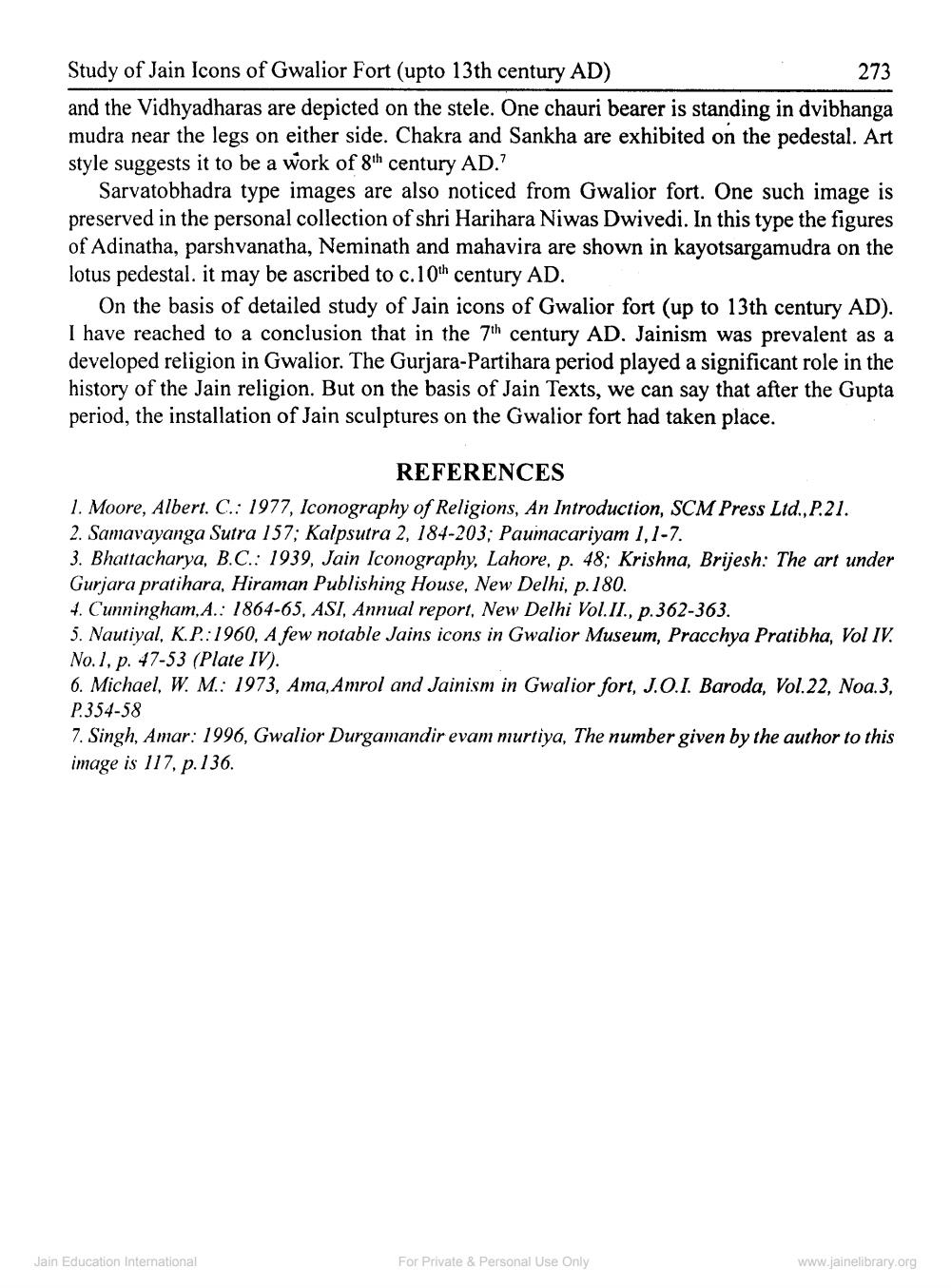________________
Study of Jain Icons of Gwalior Fort (upto 13th century AD)
273
and the Vidhyadharas are depicted on the stele. One chauri bearer is standing in dvibhanga mudra near the legs on either side. Chakra and Sankha are exhibited on the pedestal. Art style suggests it to be a work of 8th century AD."
Sarvatobhadra type images are also noticed from Gwalior fort. One such image is preserved in the personal collection of shri Harihara Niwas Dwivedi. In this type the figures of Adinatha, parshvanatha, Neminath and mahavira are shown in kayotsargamudra on the lotus pedestal. it may be ascribed to c.10th century AD.
On the basis of detailed study of Jain icons of Gwalior fort (up to 13th century AD). I have reached to a conclusion that in the 7th century AD. Jainism was prevalent as a developed religion in Gwalior. The Gurjara-Partihara period played a significant role in the history of the Jain religion. But on the basis of Jain Texts, we can say that after the Gupta period, the installation of Jain sculptures on the Gwalior fort had taken place.
REFERENCES
1. Moore, Albert. C.: 1977, Iconography of Religions, An Introduction, SCM Press Ltd.,P.21.
2. Samavayanga Sutra 157; Kalpsutra 2, 184-203; Paumacariyam 1,1-7.
3. Bhattacharya, B.C.: 1939, Jain Iconography, Lahore, p. 48; Krishna, Brijesh: The art under Gurjara pratihara, Hiraman Publishing House, New Delhi, p.180.
4. Cunningham.A.: 1864-65, ASI, Annual report, New Delhi Vol.II., p.362-363.
5. Nautiyal, K.P:1960, A few notable Jains icons in Gwalior Museum, Pracchya Pratibha, Vol IV. No. 1. p. 47-53 (Plate IV).
6. Michael, W. M.: 1973, Ama, Amrol and Jainism in Gwalior fort, J.O.I. Baroda, Vol.22, Noa.3, P.354-58
7. Singh, Amar: 1996, Gwalior Durgamandir evam murtiya, The number given by the author to this image is 117, p. 136.
Jain Education International
For Private & Personal Use Only
www.jainelibrary.org




